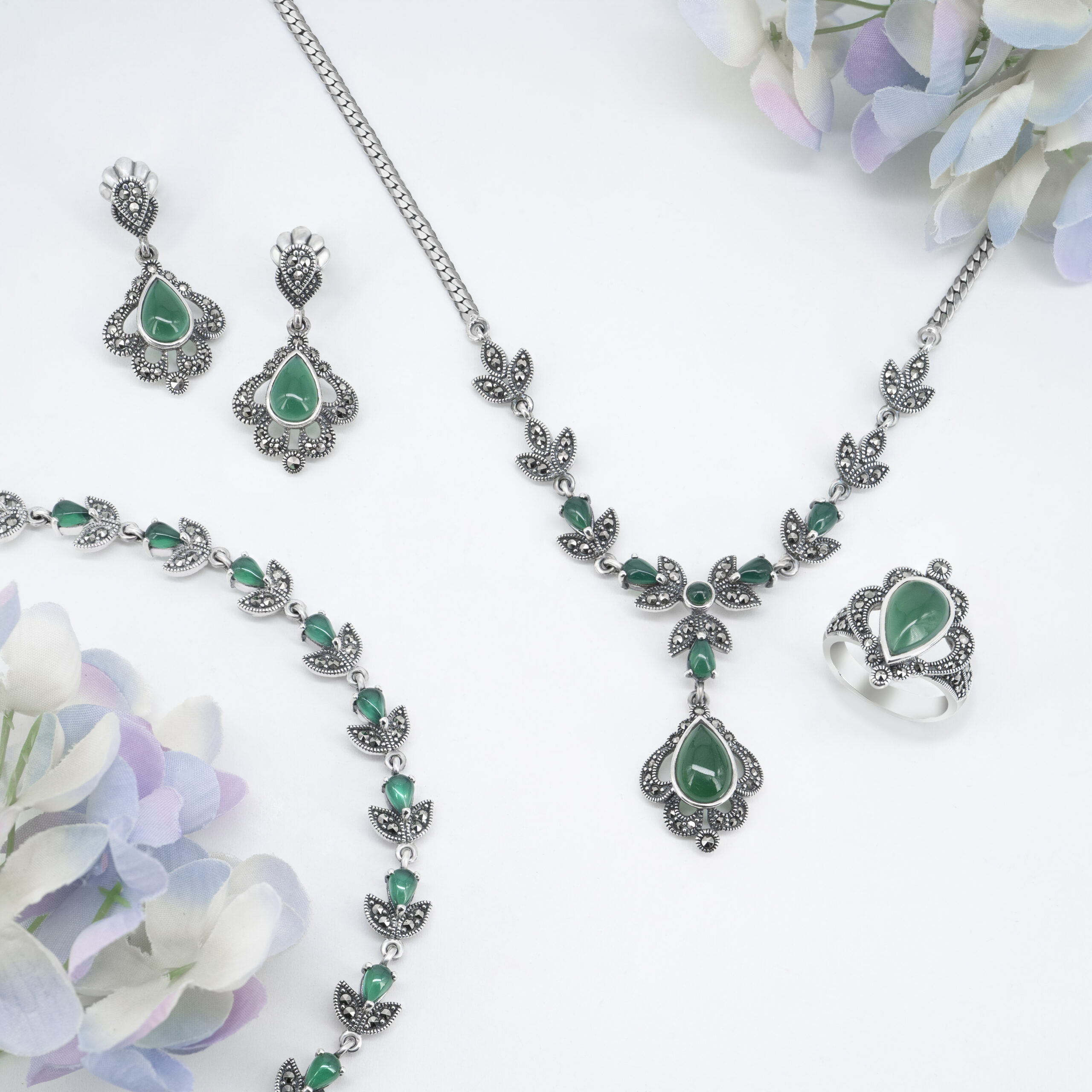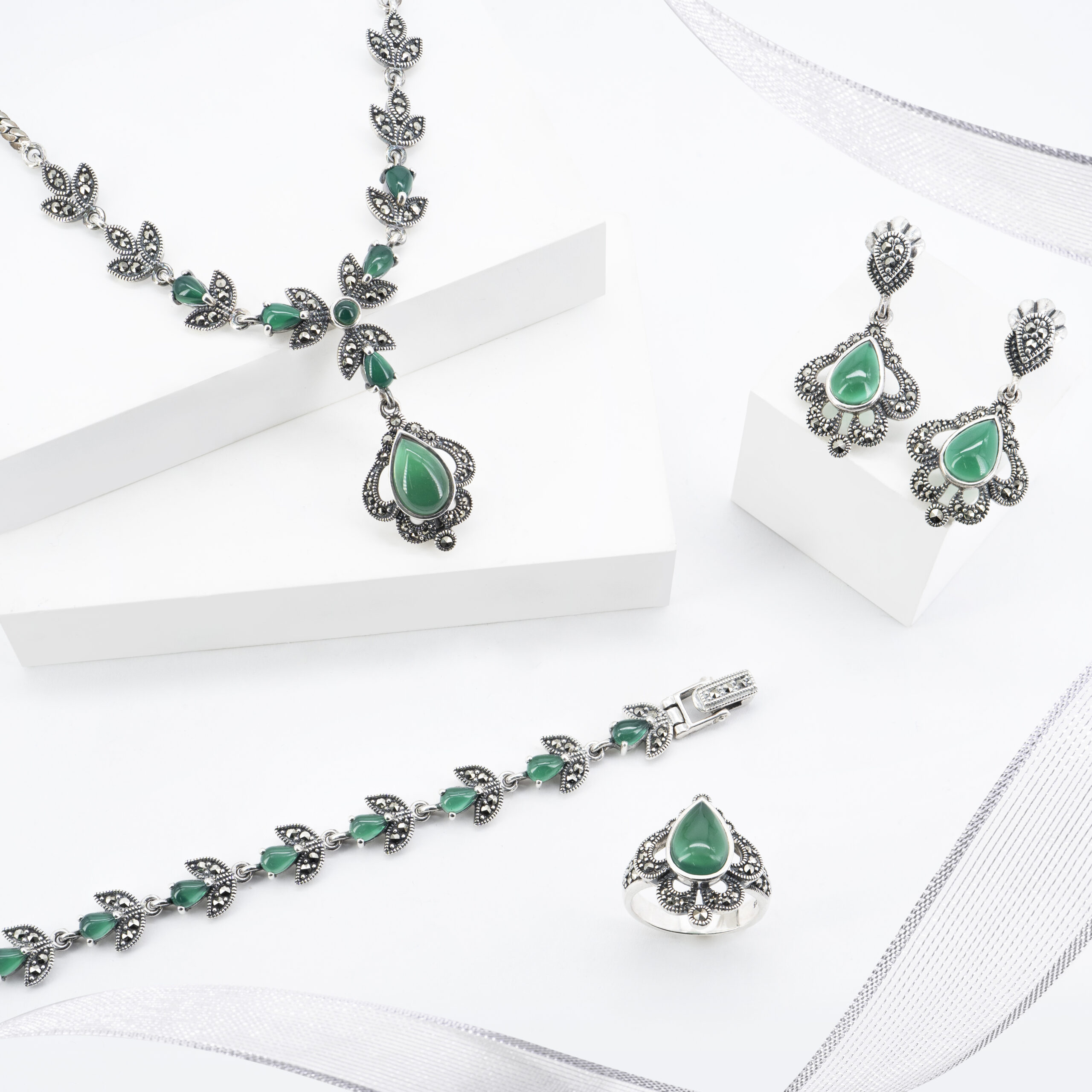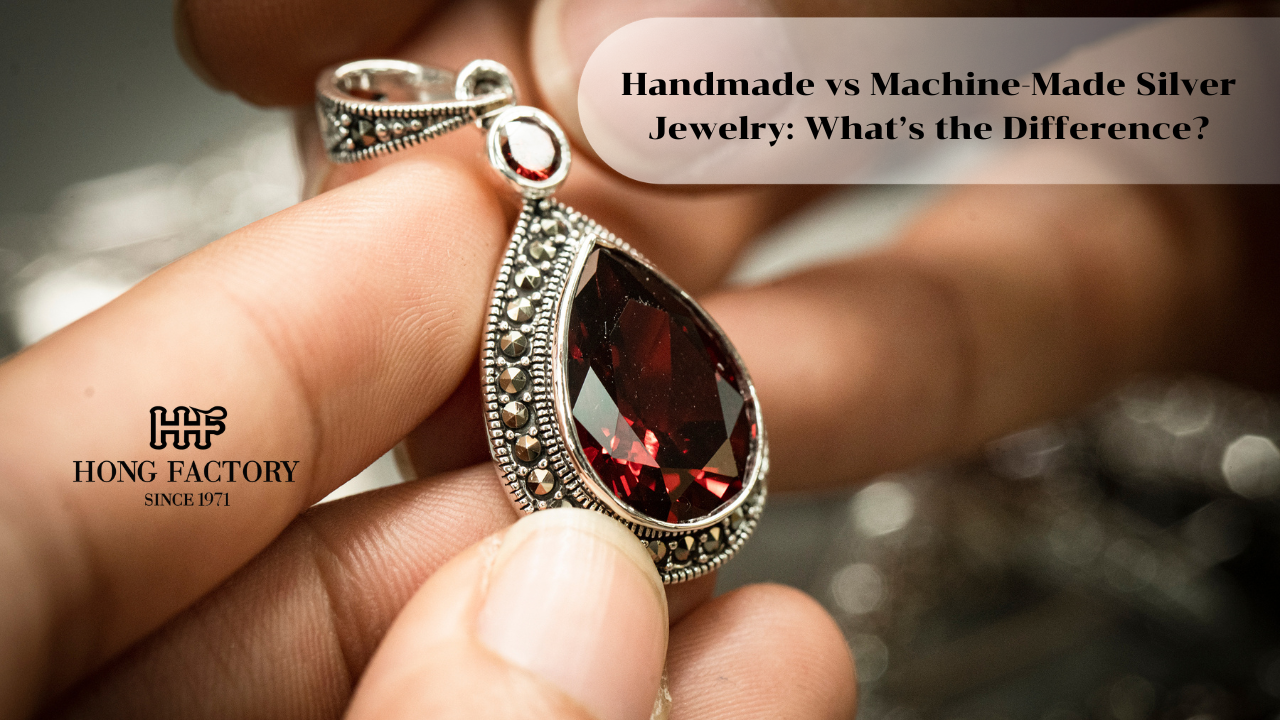In the jewelry industry, silver jewelry remains one of the most beloved and versatile choices for consumers. From minimalist rings to ornate necklaces, silver’s timeless beauty never fades. However, not all silver jewelry is created equally. The key difference lies in how it’s made — by hand or by machine. Understanding these distinctions helps buyers appreciate the artistry, craftsmanship, and true value behind every piece. Marcasite jewelry
The Rise of Silver Jewelry in Modern Fashion

Silver jewelry has always been a symbol of sophistication and accessibility. Unlike gold or platinum, silver offers an elegant shine at an affordable price, making it a favorite among fashion lovers and collectors alike. Over time, silver has adapted to every style — from bohemian and vintage to sleek and contemporary. But the real charm of silver lies in how it’s crafted. The contrast between handmade and machine-made jewelry tells a story of tradition versus technology.
Silver Jewelry: Handmade vs Machine-Made
To truly understand Silver Jewelry, one must look beyond surface appearance and explore the process behind each piece. Both handmade and machine-made silver jewelry have unique advantages, but they differ greatly in technique, quality, and emotional value.
- Craftsmanship and Individuality
Handmade silver jewelry is created by skilled artisans who shape, solder, and polish each piece individually. Every design carries subtle variations, giving it a personal touch. These imperfections add authenticity and character. In contrast, machine-made jewelry is mass-produced with precision. The uniformity ensures consistency but lacks the soul and warmth of human craftsmanship.
- Production Process
The creation of handmade jewelry involves hand tools, traditional techniques, and an eye for detail. Artisans may spend hours shaping and refining a single ring or pendant. Machine-made jewelry, on the other hand, relies on advanced molds and automated production lines that can produce thousands of identical items quickly. While efficient, this process often sacrifices the artistic nuances of handcrafted work.
- Design Flexibility
Handmade jewelry allows for limitless creativity. Artisans can experiment with textures, engraving, and gemstone placements, creating truly one-of-a-kind pieces. Machine-made jewelry is restricted by mold designs, which limits customization. However, it excels in replicating popular trends at scale, making it suitable for fast fashion markets.
- Material Quality and Finish
Handcrafted silver pieces often use premium-grade sterling silver (92.5% purity) and undergo thorough polishing and inspection. The attention to detail ensures a long-lasting shine and durable structure. Machine-made jewelry may also use sterling silver, but due to rapid production, finishing can sometimes be less refined.
- Durability and Longevity
Handmade silver jewelry typically lasts longer because it’s built with care and reinforced connections. Artisans manually check for weak points, ensuring structural strength. Machine-made pieces may be more lightweight and sometimes prone to bending or tarnishing faster if produced with thinner silver layers.
- Ethics and Sustainability

Many handmade jewelry workshops operate sustainably — recycling silver, using eco-friendly techniques, and supporting fair labor practices. In contrast, large-scale machine production often focuses on speed and profit, with less emphasis on ethical sourcing or environmental impact.
The Emotional Value of Handmade Silver Jewelry
Beyond craftsmanship, handmade silver jewelry carries emotional depth. When you wear a handmade piece, you’re wearing someone’s artistry and passion. Every curve, polish, and engraving represents hours of careful work. It’s not just jewelry — it’s a connection between the maker and the wearer.
Machine-made silver jewelry, while beautiful, often feels impersonal. Its appeal lies in affordability and accessibility, making it perfect for everyday wear or trend-based collections. But for those seeking something meaningful and timeless, handmade jewelry holds unmatched sentimental value.
How to Tell the Difference
When shopping for silver jewelry, it’s important to identify whether it’s handmade or machine-made. Here are a few key indicators:
- Look for imperfections: Slight asymmetry or variations indicate handmade craftsmanship.
- Check for maker’s marks: Artisans often stamp their initials or logos on handmade pieces.
- Inspect the finish: Handmade jewelry has smoother polishing and deeper detailing.
- Ask the seller: Reputable jewelers proudly share details about production methods.
Recognizing these details helps you make informed purchasing decisions — and appreciate the artistry behind every piece.
The Price Difference Explained
One of the biggest contrasts between handmade and machine-made jewelry is price. Handmade silver jewelry generally costs more due to labor intensity, time investment, and craftsmanship. Machine-made pieces are cheaper because of automated mass production. However, the extra cost of handmade jewelry reflects authenticity, individuality, and durability — qualities that make it worth every penny.
The Role of Technology in Modern Silversmithing
While the debate between handmade and machine-made jewelry continues, many modern silversmiths now blend both techniques. Artisans use technology like CAD design and laser cutting for precision, while still hand-setting stones or finishing surfaces. This hybrid approach combines efficiency with artistry, giving customers the best of both worlds.
Caring for Silver Jewelry
Whether handmade or machine-made, proper care preserves the brilliance of your silver pieces:
- Store in soft pouches or boxes to prevent scratches.
- Avoid exposure to water, perfume, and harsh chemicals.
- Clean with a silver polishing cloth regularly.
- Keep jewelry dry and away from humidity.
Silver jewelry naturally tarnishes over time, but with gentle care, it will retain its beauty for decades.
The difference between handmade and machine-made Silver Jewelry goes beyond production methods — it’s about soul versus precision, tradition versus efficiency. Handmade jewelry embodies creativity, heritage, and emotional connection, while machine-made pieces represent accessibility and innovation. Both have their place in the modern jewelry market.
Ultimately, choosing between them depends on what you value most — the story behind the piece or the convenience of availability. No matter your preference, silver jewelry continues to symbolize elegance, artistry, and timeless appeal.
